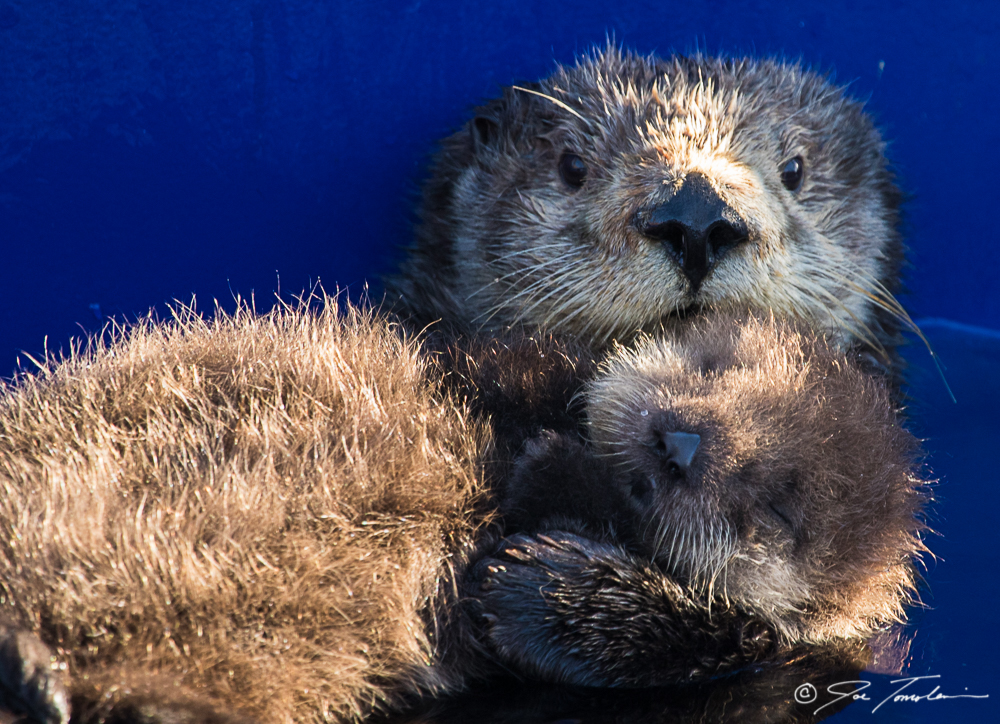For Otter Moms, Nursing Burnout Is Sometimes Deadly

What scene could be more tranquil than that of a sea otter mother cradling her nursing pup? But there's a darker side to this heartwarming tableau. Suckling a baby comes with a high metabolic cost, one that some female otters' bodies just can't meet — and the experience can be fatal.
Scientists knew that mortality rates are unusually high in female southern sea otters that have just finished lactating, but researchers had yet to pinpoint the cause.
However, a new study offers the first evidence of what's happening in the bodies of female otters as they nurse their young, helping scientists to understand how the animals' metabolisms kick into overdrive to handle the demands of lactation — and why they sometimes burn out. [The 7 Weirdest Moms in the Animal Kingdom]
"This had been a big question within the marine mammal scientific community for many years," said study co-author Nicole Thometz, a postdoctoral researcher with the Department of Ecology and Evolutionary Biology at the University of California, Santa Cruz.
Thometz told Live Science in an email that in an earlier study, she and her colleagues had evaluated the energy demands of sea otter pups at the Sea Otter Research and Conservation (SORAC) program at the Monterey Bay Aquarium in California. As the otters grew from pups to juveniles, the scientists calculated how many calories a female otter would require to keep up with the youngsters' needs, estimating that she would need about twice as many as a nonlactating female.
But Thometz said a crucial piece of the puzzle was missing: metabolic analysis of a lactating female. Without that critical data, scientists had no way of knowing how a female otter's body responds to lactation, and whether that challenge might be even greater than they suspected.
Meanwhile, the scientists faced a challenge of their own; breeding otters in captivity is illegal, so the researchers had no way of collecting the missing data. The unexpected arrival of a pair of young female sea otters, one of whom was pregnant, at the Monterey Bay Aquarium handed the researchers exactly the opportunity they needed.
Get the world’s most fascinating discoveries delivered straight to your inbox.
The two otters were moved to a lab at Santa Cruz, where the researchers used a special chamber to measure the animals' oxygen intake.
The scientists monitored the pregnant otter, nicknamed Clara, before the pup's birth, while she nursed it, and after the pup was weaned. They found that over four months of producing milk for the pup, Clara's energy requirements doubled, with her resting metabolic rate increasing by 51 percent.
"Due to high lactation costs, we found the cost of pup rearing to be significantly higher than previously estimated — approximately twice nonreproductive levels for the last three months of lactation," Thometz told Live Science.
For a species whose normal energy demands are already high and whose energy reserves are typically low, this represents a significant energy burden, she explained.
"This is likely one of the underlying reasons why we are seeing high mortality rates for prime-age females at the end of lactation," Thometz said, particularly in areas where sea otter populations are more numerous and there is limited access to prey.
The findings were published online Aug. 3 in the Journal of Experimental Biology.
Original article on Live Science.

Mindy Weisberger is a science journalist and author of "Rise of the Zombie Bugs: The Surprising Science of Parasitic Mind-Control" (Hopkins Press). She formerly edited for Scholastic and was a channel editor and senior writer for Live Science. She has reported on general science, covering climate change, paleontology, biology and space. Mindy studied film at Columbia University; prior to LS, she produced, wrote and directed media for the American Museum of Natural History in NYC. Her videos about dinosaurs, astrophysics, biodiversity and evolution appear in museums and science centers worldwide, earning awards such as the CINE Golden Eagle and the Communicator Award of Excellence. Her writing has also appeared in Scientific American, The Washington Post, How It Works Magazine and CNN.
 Live Science Plus
Live Science Plus





